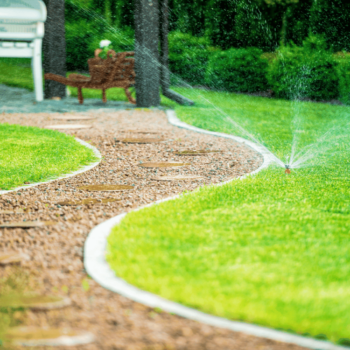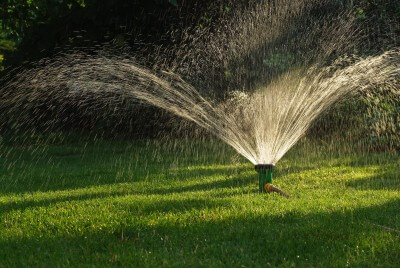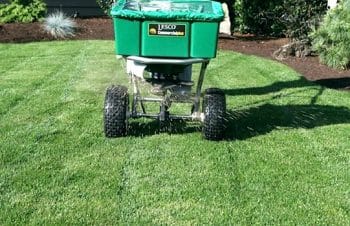Learn how often to water grass in winter. As colder weather approaches, your lawn care routine needs to change but it doesn’t come to a complete stop for the season. Lawns still need maintenance and water in the winter, albeit far less than they do in the middle of summer.
How Much to Water
In the summer months, water is vital to keep your lawn lush and healthy. It is no different in the winter, but there are some guidelines to follow to be sure you are doing what is best for the needs of your lawn. Even dormant grass needs occasional water to sustain the root system.
How often to water grass in winter? Most lawns need 1-2 inches of water a week in the summer. That amount drops down to about ½ inch in the cooler months.
Rain and snow may not be enough to help make up that moisture, especially if you live in a dry climate or are experiencing a dryer-than-usual season. In these cases, additional watering may be needed.
Ryno’s famous Lawn Watering Guide offers a broad set of instructions for appropriate irrigation, that our customers have been utilizing successfully for years.
How Often to Water Grass in the Winter and When

Watering in the morning is the best time. It allows the moisture to soak into the topsoil. It also gives any excess water more time to evaporate in the sun, thereby avoiding fungal growth.
Try to get water directly to the roots of the grass and other plants in your yard. Avoid leaving an excess of water droplets in stems and leaves.
Pay close attention to the weather reports to know when cold snaps are coming or when moisture is expected. Watering a few days before colder weather hits can actually help protect your grass from frost damage. It allows the water adequate time to soak down into the roots.
Water helps strengthen the grass to help it fight the cold. Water also helps the blades retain warmth longer than if they were dehydrated.
Want to learn more about how you can optimize the water absorption in your topsoil? Check out our Moisture Management service page for additional information!
Water only when the temperature is above 45 degrees Fahrenheit. Avoid doing so right before temperatures are expected to drop below freezing points.
Most Texas turf grasses overwinter pretty well, meaning that they go at least partially dormant in the cooler months to preserve their energy. Our friends at Texas A&M have some helpful hits about how to optimize the overwintering process.
Watering once or twice a month is usually enough to keep your lawn moist throughout the winter. Check in on it weekly and look for signs of stress and wilt.
See if the grass bounces back after being walked on. Some stress is good for your lawn’s root development, but make sure it doesn’t get too stressed.
Special Considerations
Checking the local weather can also keep you from watering too much or watering at a time when it can’t reach the roots. Extended periods of temperatures below freezing can keep water from absorbing into the ground. Get more winter watering tips for your plants and lawn from the University of Nebraska-Lincoln.
Pay special attention to newly planted plants or plants that are more susceptible to frost damage. Consider bringing in more delicate plants in planters, or covering plants that are planted in the ground, during extended or deep freezes.
Be sure to turn off sprinkler systems before a freeze is expected, so it won’t be damaged or cause the pipes to burst. If you’re in the market for a new sprinkler system, please visit our Lawn Irrigation service page to learn how Ryno Lawn Care can help.
Mulch can be used to help insulate plants and trees and help to retain moisture. Keeping grass lengths a little longer in the winter is also helpful. The last time you mow in the fall, adjust the blades accordingly.
With careful maintenance and watering through the winter, you are giving your yard a good head start for a healthy growing season.





